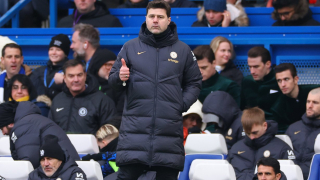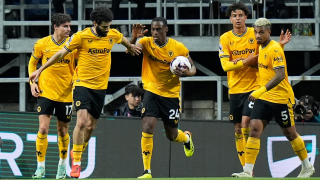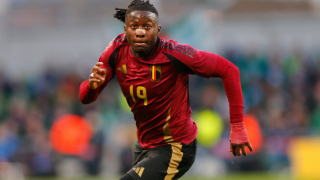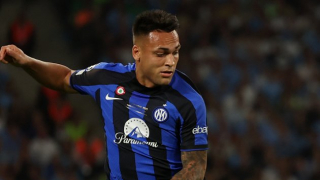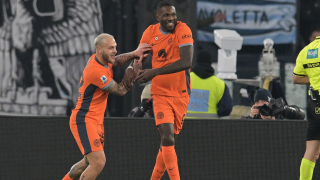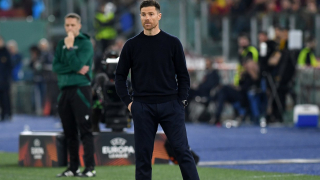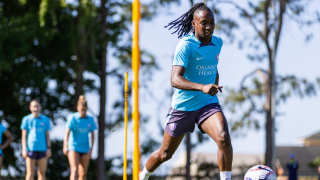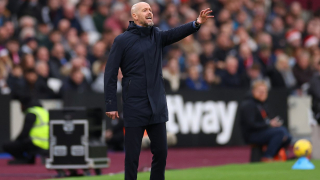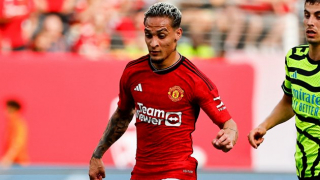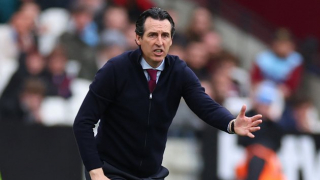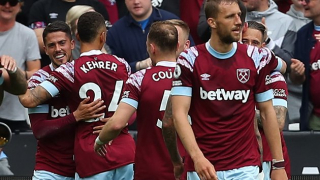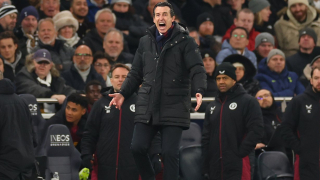After four games, Watford look like this season's Premier League surprise package. Javi Gracia has led his side to a 100 per cent record, winning every available point in clashes with Brighton, Burnley, Crystal Palace and Tottenham. Along the way, they have scored nine goals and conceded just three.
Nobody saw Gracia's men starting so strongly; indeed, many believed they would be involved in a relegation battle. And while there is still a long way to go before survival is achieved, Watford appear prepared for a campaign spent closer to the top half than the bottom. Here, we at Tribalfootball analyse why.
LOYAL GRACIA STANDS BY HIS SQUAD
Gracia is known for his loyalty – he left Almeria after getting them promoted to La Liga because, rather than stick by the promotion-winning players, the club looked set to undergo serious squad turnover in a bid to compete at a higher level. A similar commitment has been seen at Watford, where the Spaniard has stuck mostly by those who were with him for his first six months at Vicarage Road.
The only summer signing to have established himself in Gracia's starting line-up so far is goalkeeper Ben Foster. He is protected by a centre-back duo of Craig Cathcart and Christian Kabasele, while full-backs Daryl Janmaat and Jose Holebas are tasked with getting forward in the wider areas when appropriate.
Etienne Capoue and Abdoulaye Doucoure present a formidable central midfield partnership combining energy, technique and intelligence. On either side of them, Will Hughes and Roberto Pereyra are nominal wingers who provide plenty of defensive support and prefer to attack inwards than go around the outside. Up front, Troy Deeney and Andre Gray offer aerial strength and pace.
Watford have lined up in a 4-4-2 system with the above personnel in each of their first four league games this term. However, the shape changes depending on the phase of play – with both wingers coming infield at times, it can often look more like a 4-2-2-2. Regularly used substitutes include Ken Sema, Isaac Success and Kiko Femenia, while Gracia will be excited to welcome Nathaniel Chalobah, Gerard Deulofeu and Tom Cleverley into the fold when fully fit.
WATFORD'S ORGANISED DEFENSIVE BLOCK
Gracia's side defend in a 4-4-2 mid-block. This involves the last line of defence – the back four – being positioned roughly midway between the halfway line and the edge of their own penalty box, while the first line of defence – the front two – is positioned just in front of the halfway line.
The positioning of the first and last defensive lines ensures good vertical compactness, while close distances between players within the same line guarantees horizontal compactness. What this means is Watford are extremely difficult to play through for the reasons outlined below.
- Horizontal compactness between players on the same line makes penetrating that line difficult for the opponent.
- Assuming the opponent penetrates one line, the vertical compactness between Watford's lines means the opponent can be quickly closed down from multiple angles, increasing the chances of a tackle, a poor touch, or a rushed pass.
In order to maintain their compactness, Watford's primary defensive focus is their collective positioning. They move as a unit, so when one player goes out to close down near the wing, his teammates all shift to prevent large spaces from opening up between one another.
According to the legendary Arrigo Sacchi, there are four reference points to zonal defence: the ball, the space, the opponent, and the teammate. As discussed, Watford are mainly focused on the latter, though the opponent and the ball are also of importance.
At times, one of the central midfielders will step up to retain access to an individual opponent in their specific zone of the pitch. Against Crystal Palace, both full-backs stayed tight to the opposing wingers as they moved deep or inside. And, against Burnley, the far-side winger – be it Hughes or Pereyra –positioned himself slightly wider than usual so as to deal with potential overloads following a switch of play, something Burnley employ frequently to give themselves crossing opportunities.
DEENEY AND GRAY LEAD THE PRESS
Generally speaking, Watford want to present a compact unit and congest the space between the lines. The aim is to force the opposition into sideways passes, from where they often begin to press. This is what tactical analysts call a 'pressing trigger'. Below are Watford's most obvious pressing triggers.
- Sideways passes, particularly over a long distance.
- Backwards passes, particularly if slow passes.
- An opponent receiving the ball with his back to goal.
- An opponent taking a poor touch (as seen below).
The two strikers, Deeney and Gray, are usually responsible for instigating pressing. They take up central positions, restrict passing lanes and move to press the opposing centre-back in possession. Once one of them has taken the decision to move up and press, using one of the above triggers as a cue, their teammates will follow.
Watford's pressing tends to take place around the halfway line and is man-orientated; this means one player presses the ball, while his nearby colleagues move up to close down the opponent's nearest passing options. The aim is not necessarily to win the ball through a tackle or interception, but to force a high tempo of passing that the opposition can't maintain. This will often lead to one of two things: 1) the opposition make an error (poor control, rushed pass) and possession is turned over, or 2) the opposition panic and go long to Watford's tall and strong centre-backs and central midfielders.
THROW-IN SUPERIORITY
Watford's focus on compactness extends to their defence of opposition throw-ins. Just as in open play, they look to congest space around the ball so as to prevent the opponent from playing through them. The far-side winger will tuck in so all four midfielders are in the immediate vicinity, and Gracia's side often have numerical superiority – be it a 7v5 or a 7v6 – in the area where the throw-in is taken.
Using this overload, they apply intense pressure to the receiving opponent once the ball is thrown in. The risk is that the opposition manage to keep the ball and quickly switch it to the far side, where there is no Watford winger and thus a lack of defensive coverage. The reward, however, is that Watford either win the ball back and start a counter-attack or force the opponent backwards and segue into their pressing, which was discussed in the previous section.
Watford have already scored a goal directly from such a situation, against Burnley. This is depicted below. Opposition right-back Matthew Lowton receives a return pass having thrown in to a teammate, but he is surrounded by yellow and black shirts. Naturally, he tries to switch play to the open far side. However, he doesn't have time to set himself, rushes his pass, and gives the ball to Hughes, who has tucked in. The winger begins and finishes the counter, dribbling forward into space and scoring.
It's worth noting that opponents already seem to have picked up on this particular strategy, which is a simple but effective way to gain possession and counter-attacking opportunities. Mauricio Pochettino's Tottenham made consistent use of quick throw-ins in advanced areas, removing the possibility of Watford organising themselves to defend the throw.
COMPACTNESS AIDS COUNTER-ATTACKING
The compactness of Watford's 4-4-2 defensive block doesn't just help them defend in open play and from throw-ins – it also enhances their chances of success in attacking transition. There are a couple of reasons behind this, as explained below.
- Having won possession, Watford have lots of players around the ball. Not only does this mean the ball-winner has plenty of nearby options to offload to, but creates the opportunity for short passes and quick combinations to out-play the opposition should they choose to counter-press Watford.
- With more options around the ball-winner, Watford players can exchange short passes and buy time for their strikers to set themselves for the counter-attack. And, with more of a structure in place, there is more chance of the counter leading to progression up the pitch and, ideally, the creation of a scoring chance.
While both Deeney and Gray contribute heavily to pressing, they are left in relatively advanced positions. This is so that Watford can play into them on the counter-attack, with Deeney dropping deep to receive balls over the top and Gray simultaneously looking to run in behind the opposition back line.
CAUTIOUS POSSESSION
Both of Watford's full-backs, Janmaat and Holebas, are attack-minded and capable dribblers. They provide width down the flanks while the two wingers, Hughes and Pereyra, come into the inside channels. In order to facilitate the full-backs' overlapping runs, Gracia has his central midfielders take up conservative positions in build-up.
As depicted below, Capoue and Doucoure will both sit fairly deep as Watford build out from the back, offering a close connection to the centre-backs and shifting laterally to support possession should it move out wide to the full-backs and wingers. One, usually Doucoure, may then move up to continue supporting the attack as it progresses, while the other remains in a deeper position.
The cautious positioning of the central midfielders is done not only to provide stability in the early stages of possession, but to guarantee a strong central presence in the defensive third should the opposition win the ball. In such situations, with Capoue and Doucoure both stationed close to the centre-backs, Watford have enough numbers in the middle to steer opposition counter-attacks into wider areas, counter-press, or block any long-range shot.
When looking to progress possession through the thirds, Watford's wingers will occupy a different channel to the full-backs. An example of this can be seen below against Brighton, where Pereyra moves infield to receive and Holebas overlaps down the left touchline. These movements afford the Watford ball-player more passing options and cause a decision-making problem for the opposition, who must defend against players in two separate channels instead of one.
While they sometimes look to build attacks gradually through short passes, Gracia's side generally look to play directly – only Burnley average more than their 77 long passes per game. In the process, Watford make use of the aerial ability, physical strength and hold-up play of Deeney and Gray, who seems increasingly comfortable with his back to goal. Balls over the top to the two strikers have a reasonable chance of sticking, and if not there is a chance to counter-press.
FOLLOWING KLOPP'S COUNTER-PRESSING LEAD
Jurgen Klopp helped to familiarise Premier League pundits with the concept of counter-pressing upon his appointment as Liverpool manager. While the idea is now widely understood, few teams in England's top flight are as intense in its application as Watford.
There are different ways to press the opposition's counter-attack. Some teams look to occupy the space around the ball, others focus on cutting off passing lanes, but Gracia's side are more man-orientated in their approach.
Following turnovers they will attempt to apply pressure to the opponent in possession, limiting the ball-player's time and space, and closely covering his nearby teammates, discouraging short passes and their chances of establishing clean possession. This often forces the opposition to go long without much thought, reducing the likelihood of a controlled counter-attack.
Watford's attacking structure often plays into their approach in attacking transitions. From long balls to Deeney, at least one of the wingers will come inside to offer support for the second balls. Having taken up a more central position, they are near to the ball and can therefore help out in counter-pressing along with the central midfielders and strikers if necessary.
CAN THEY KEEP SURPRISING?
Watford are not the perfect side. They can be open to quick switches of play, while Burnley and Crystal Palace at times exploited their openness on the far side in defensive transitions. Furthermore, Tottenham were able to open them up through a combination of good midfield staggering and diagonal passes between the lines. However, the early numbers are promising.
Only Liverpool have conceded fewer Premier League goals than Gracia's side, and the same standings are seen in the Expected Goals against table. This defensive solidity is the result of the organised pressing and solid defensive block discussed earlier in this analysis, something that is backed up by underlying statistics.
Watford's PPDA (passes allowed per defensive action in the opposition half) is 9.55. Only Tottenham, Liverpool, Chelsea, Everton and Manchester City have a better record. Meanwhile their ODC (opponent passes completed within 20 yards of goal) is 16, a tally only Liverpool and Chelsea have bested so far.
Even assuming teams gain better understanding of how to open them up as time passes, Watford should have enough to at least compete for a mid-table finish. Given pre-season predictions of a relegation dogfight, that would be a huge surprise.

